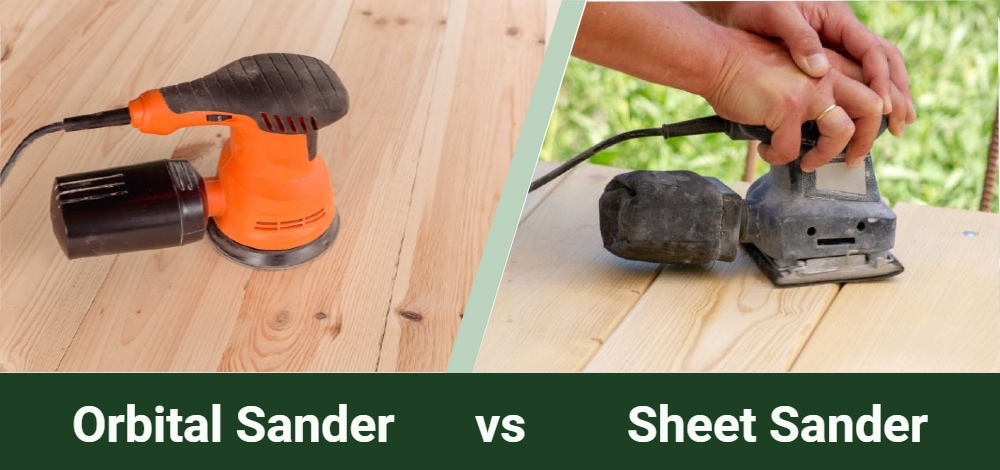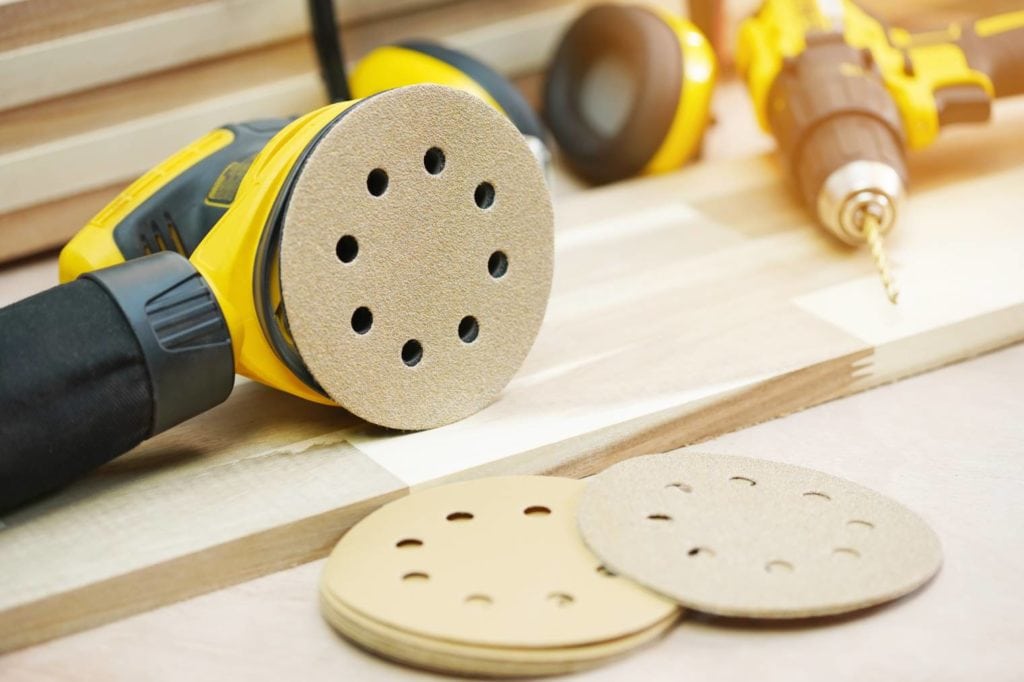Orbital vs Sheet Sander: Differences, Types & FAQ
-
Codee Chessher
- Last updated:

Sanders are a valuable part of any tool collection, whether you’re a novice DIYer or a veteran woodworker. It can be hard to differentiate the various types of power sanders, but two of the most common are the orbital and sheet sanders. As with any tool, both of them are designed for specific tasks. Let’s check out a bit more about each of these sanders and when to use them.
Orbital Sander Overview
At a glance, orbital sanders look like any other power sander, but they have some key differences. Namely, orbital sanders use special sanding pads to sand a roughly circular yet random pattern. They’re also more high-powered and heavier than other sanders, which makes them more expensive. Their weight also makes them hard to use in hard-to-reach areas.
Notably, orbital sanders produce a ton of vibration. Because of that, most models have built-in vibration reduction to reduce hand strain. Unlike other sanders, orbital sanders leave a smooth finish with minimal to no swirl marks.
Orbital sanders are generally either square or rectangular, which makes them great for sanding precise edges. Overall, orbital sanders are a high-powered solution for rough and tough surfaces.

How It Works
You’re probably wondering about the random swirl pattern that the orbital sander uses—what’s the point? As it turns out, the swirl pattern was specifically designed to leave as few visible sanding marks as possible. As you sand, holes in the sanding pads send the dust to an attached dust bag. You can also plug it into a vacuum hose for disposal, which cuts down on cleanup.
When to Use
Orbital sanders are a powerful way to remove paint, stain, and finish wood. Use them when you need to finely sand a piece of wood, clean a surface for painting, or have any quick sanding needs. The orbital sanding pattern leaves such a clean finish that you won’t even need to touch it up most of the time.
Be careful when using an orbital sander on delicate surfaces because it’s so powerful that it may cause damage. This also makes sanding cross-grain risky because it can leave very unsightly marks if you don’t have a deft hand.
- Powerful motor
- Random orbital sanding pattern for a cleaner finish
- Collects dust and debris
- Compatible with sandpaper
- Can use circular sanding pads
- Vibration absorption reduces hand strain
- Higher price than most other sanders
- Primarily uses expensive sanding pads
- Produces a lot of vibration even with absorption tech built-in
- Not suited for delicate materials
- Leaves hideous marks when used against the grain in wood without care
Sheet Sander Overview
Sheet sanders are an inexpensive sanding solution that uses sandpaper squares, which makes it cheap to use regularly. As with most sanders, sheet sanders simply move the sanding surface back and forth at very high speeds to sand a surface. These are more lightweight than orbital sanders, which makes them great for touching up hard-to-reach areas.
Sheet sanders are more prone to leaving unsightly scar-like marks on surfaces, which makes them less useful for just quickly sanding something to a clean finish. It does, however, make them great for sanding off paint or getting something ready to paint. Sheet sanders also have a weaker motor than orbital sanders, making them great for delicate surfaces.
How It Works
Sheet sanders use a standard back-and-forth motion to sand fine layers of paint, wood, metal, and other materials. Because this is relatively inefficient, sheet sanders are best used by making multiple light passes until the surface is sanded to your liking. This makes them perfect for detailed work where you need to precisely tailor the finish level. Unlike an orbital sander, sheet sanders have no debris collection mechanism, so they’ll leave a mess.
When to Use
Sheet sanders are an affordable way to sand most surfaces, although they may not have the same clean finish as an orbital sander. Use sheet sanders for detail work and hard-to-reach areas your orbital sander won’t reach, or simply use it to strip paint. They’re also great for removing adhesive residues, polish, and stains.
- Affordable
- Uses cheap sandpaper
- Suitable for most sanding tasks
- Lightweight & portable
- Ideal for edges and corners
- Relatively low power output
- Not suitable for large-scale jobs
- Doesn’t leave as smooth a finish as an orbital sander
Which Should I Use?
Orbital and sheet sanders are both useful but for different tasks. To determine which sander will best suit your needs, check out the lists below to review the strengths of each.
- You need to quickly sand something
- You need a clean finish
- You don’t want to touch up after
- You need heavy-duty sanding action
- You need to sand a large, flat surface
- You need to sand edges or corners with precision
- You need a budget power sander
- You want a portable sander
In Conclusion
Power sanders are versatile tools, with orbital and sheet sanders filling different niches. The former is best for quick, thorough sanding action at a premium price, while the latter is an affordable way to sand the majority of surfaces.
Featured Image Credit: (L) evgengerasimovich, Shutterstock | (R) Inna Horosheva, Shutterstock
Contents
